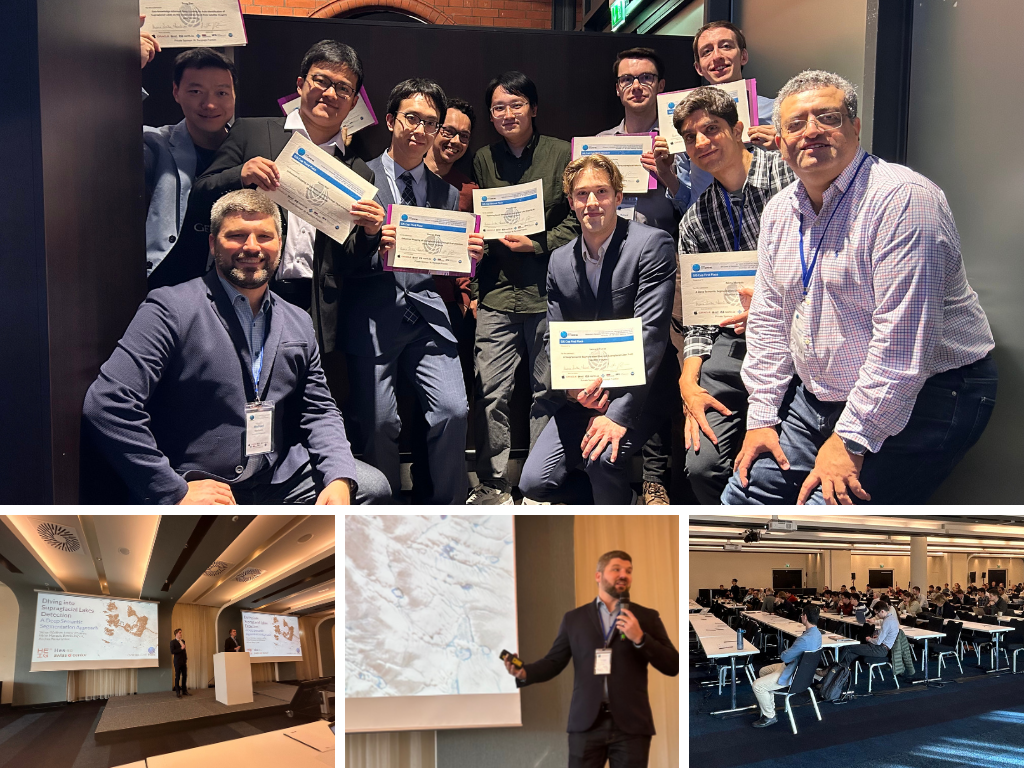last updated 2024 February 23
Background
The tracking of lakes through a melt season, when they fill, how much they fill, and (most importantly) when they drain, throughout a year, and tracking those trends across years, will help us solidify our understanding of the way water on the ice sheet is behaving in a rapidly changing climate over Greenland. Due to the lack of annotated data iHARP (led by Dr. Mike MacFerrin) along with Earthrise Genome partners (Dr. Edward Boyda and Ms.Kim Young) worked with high schoolers across two semesters. A curriculum unit was developed in partnership on polar ice sheet lakes, followed by data annotation for the supraglacial lakes. The annotated data was then used to organize the ACM SIG Spatial cup to create new AI algorithms for supraglacial lake detection.
The Challenge
Supraglacial lakes can be optically complicated. They often are partially or fully ice-covered, can drain and refill in days (partially or fully), and are often filled with dust and debris. They are spectrally similar to “slush fields”, areas of blue-ish wet snow that do not yet have free-standing water and therefore are not classified as “lakes” outright. Unlike land-based lakes, in which water is largely separated from its bed, here the solid bed and the water share an intermingled relationship: water freezes solid onto the ice beneath it, and melts again into water when temperatures rise. Lastly, the presence of clouds, being largely the same color as underlying snow, complicates detection in their own right and makes identifying underlying features difficult. Satellite artifacts (seams between tiles, spectral noise, etc) are easy for humans to visually ignore, but complicate algorithmic detection of these features. However, using context clues and content knowledge in an image, typically a human eye can distinguish between a “lake” (dirty or not, ice-covered or not) and a “non-lake” (slush field, rivulet, empty ice, etc.), making lake detection a good candidate for machine learning, although this competition is algorithm-agnostic.

Sponsors and Acknowledgements
- Cash prizes and travel grants for the GISCup 2023 was made possible through a generous donation by W. Randolph Franklin
- AWS Credits were provided by an in-kind donation from Amazon
- The GISCup 2023 competition has been organized by committee members via support from US National Foundation and the iHARP HDR Institute
Contest Chairs
- Mike MacFerrin, University of Colorado Boulder
- Mohamed F. Mokbel, University of Minnesota
- Aneesh Subramanian, University of Colorado Boulder